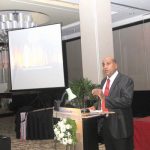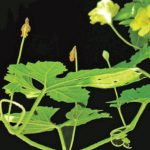-
CAREGIVING FOR THE ELDERLY
July 2013

STUDENT: Waruni Jayasinghe
INSTITUTION: University of Moratuwa
THE SITE
The site is located in Sri Jayawardhenapura Kotte, overlooking the serene Diyawanna Oya. The main reason for the selection of this location is the positive image of the place: the beautiful natural environment, accessibility to public parks, market places, religious places and peaceful residential areas. Furthermore, the environment itself provides natural inducements for physical and mental well-being of the elderly.
USER
For any man who has led a vibrant and active life the ¬realities of aging can be humbling. Coming to terms with this phenomenon is one of life’s great empowerments. In this project, the senior citizens of the country are the primary users while the secondary users are the small children who attend preschool.
The elderly tend to recall their childhood memories with pleasure. Interacting with children rekindles these childhood memories which results in emotions of happiness and joy and this, in turn, contributes to their psychological and physical well-being. Therefore, elders love spending time with little children. The kids in turn enjoy the company of elders as children are instinctively keen to learn and listen to stories and experiences. Interacting with children enables the elders to pass on their knowledge in terms of tradition and values to the next generation. Through this experience the elderly would constantly be in touch with children and thereby they would neither feel marginalised nor experience loneliness. This would also help bring about better physical and mental well-being of the elderly.
THE CONCEPT OF THE DESIGN
The concept for the design is the “Mahagedara,” or the ancestral home.
Thus, this care giving home would be a place that sustains the surrounding community. It would also enable three generations to meet and pass on knowledge from one generation to another in order to ensure continuity of traditions. In such a place, where there would be reverence for the elderly as repositories of experience and torchbearers of tradition, people would tend to spend more time in their company.
The design also introduces spaces for activities such as knitting, sewing and making handicrafts in order to help elders keep themselves occupied. In addition to such activities, they would also have the opportunity to interact with and impart knowledge to the children who attend the preschool in the premises. This would help prevent the marginalisation of both these groups.
It was understood that elders prefer social interactions at different levels. Those who prefer a greater degree of social interaction would have to share the premises with those who favour limited social intercourse. The care home, therefore, offers three typologies of accommodation for elders with each one offering a different degree of spatial interaction.
Typology 1 is for elders who prefer a greater degree of interaction. They love to move around with people and expect less privacy. In this typology there are four to five elders sharing one bedroom in a dormitory-type arrangement with a common living and dining area.
Typology 2 is for elders who prefer to have a certain degree of privacy. Two to three elders share one room and each unit has a living room and a small pantry.
Typology 3 is for elders who prefer to live in solitude, focusing on religious activities.
In this design, a place for all faiths has been given priority; different elements such as thick columns, lighting effects, water and plants have been used to enhance its sense of peace and serenity, especially since faith and spirituality have always been important in sustaining the mental and physical well-being of the elderly through the creation of restorative environments.
A special feature that has been used with the elderly in mind is the series of courtyards, which offer varied ambiances through the use of different textures and plants. They function as mnemonic devices that help the elderly, especially those suffering from Alzheimer’s, orient themselves, both physically and mentally, whilst negotiating the wide open areas of the complex. Consisting of common seasonal flowers and trees they help the elders recall their memories of the past by coming in contact with familiar environments. In this fashion, they function as “memory gardens” that harness the healing power of nature.























